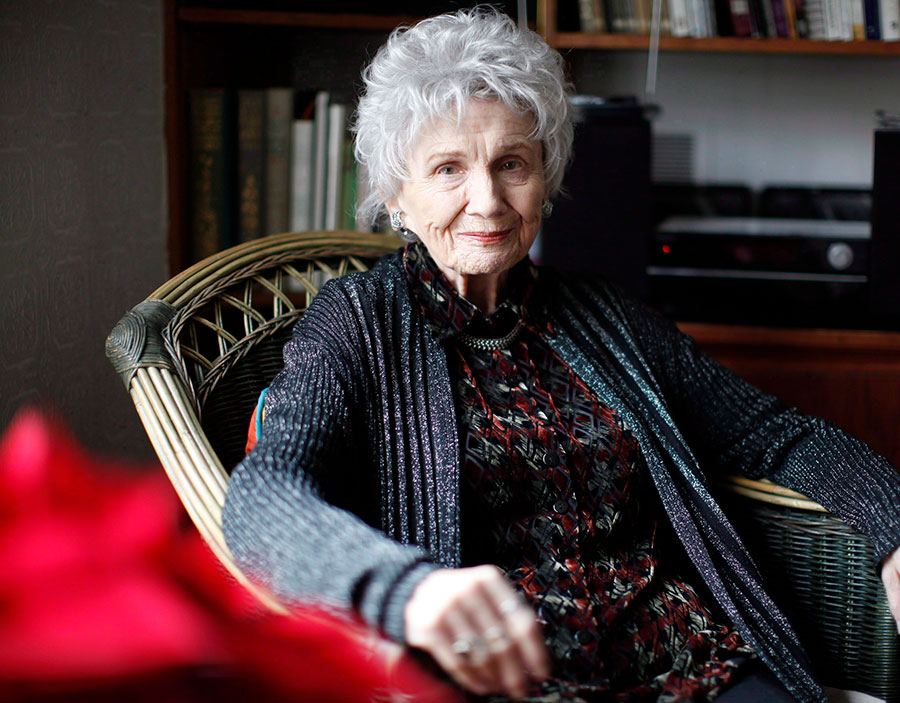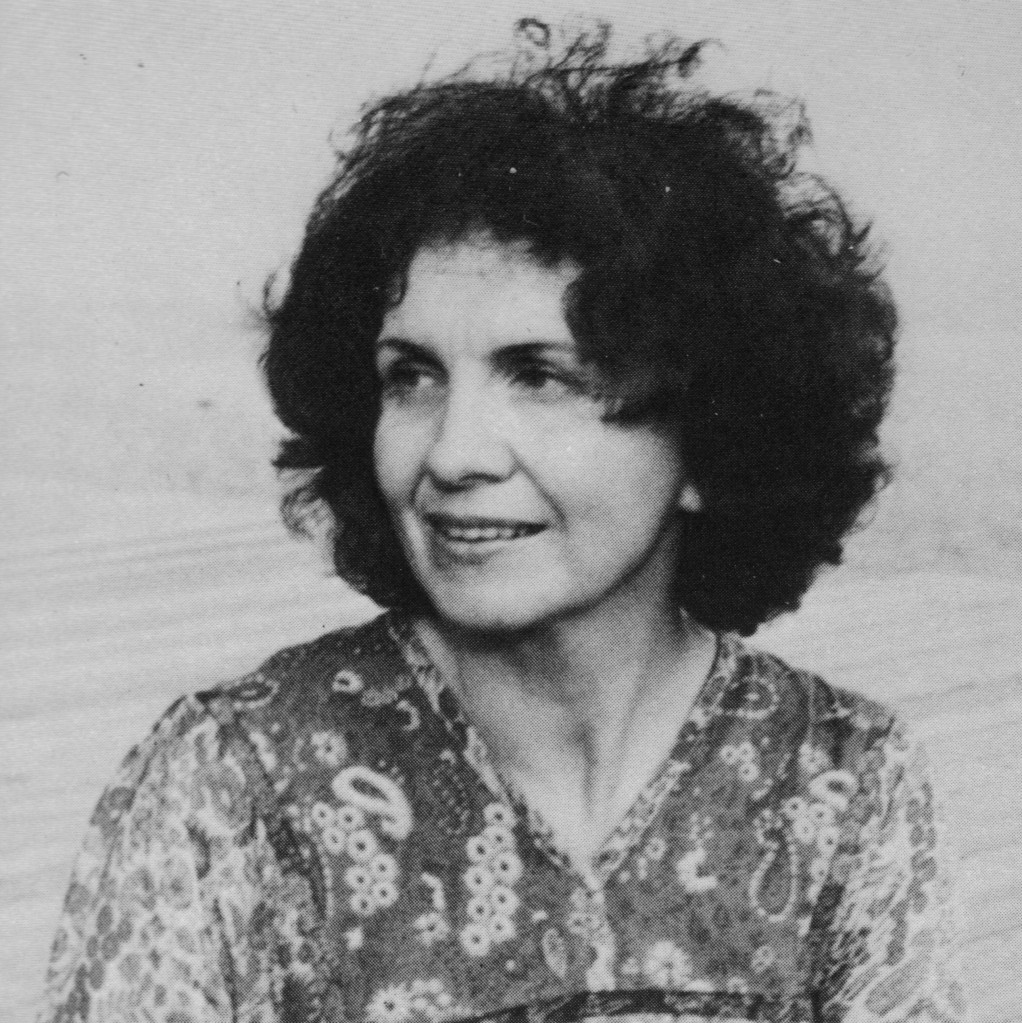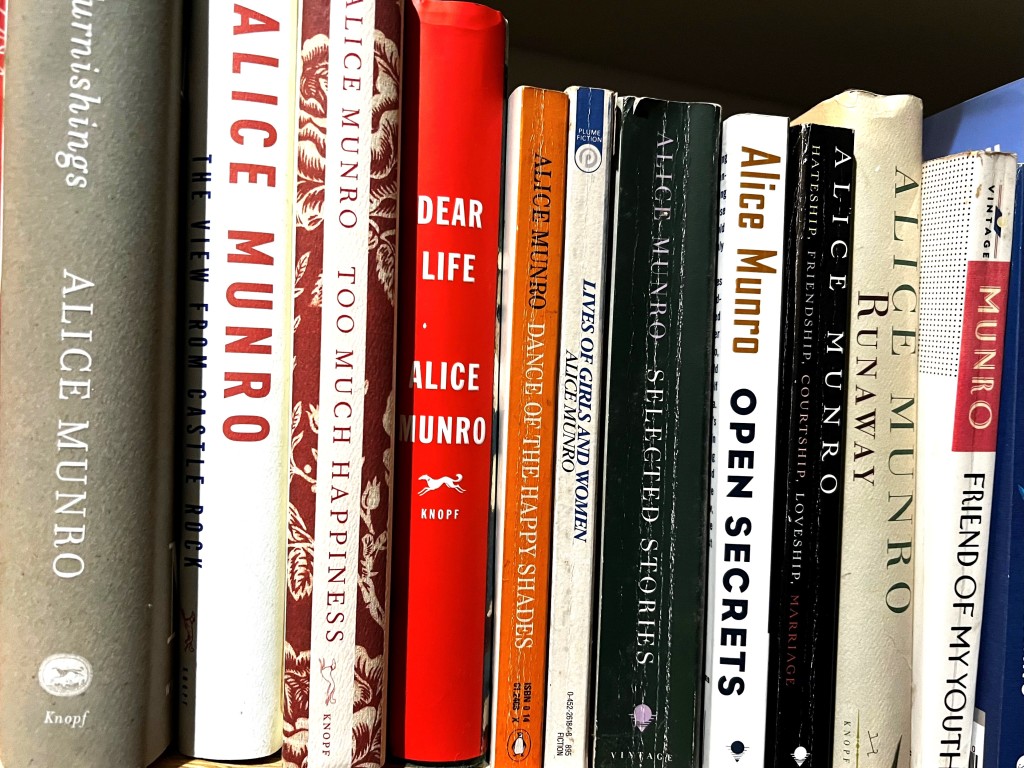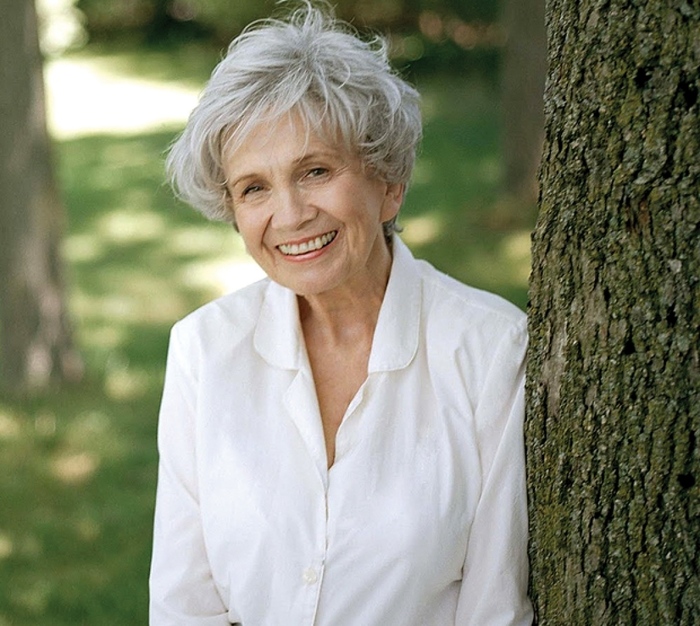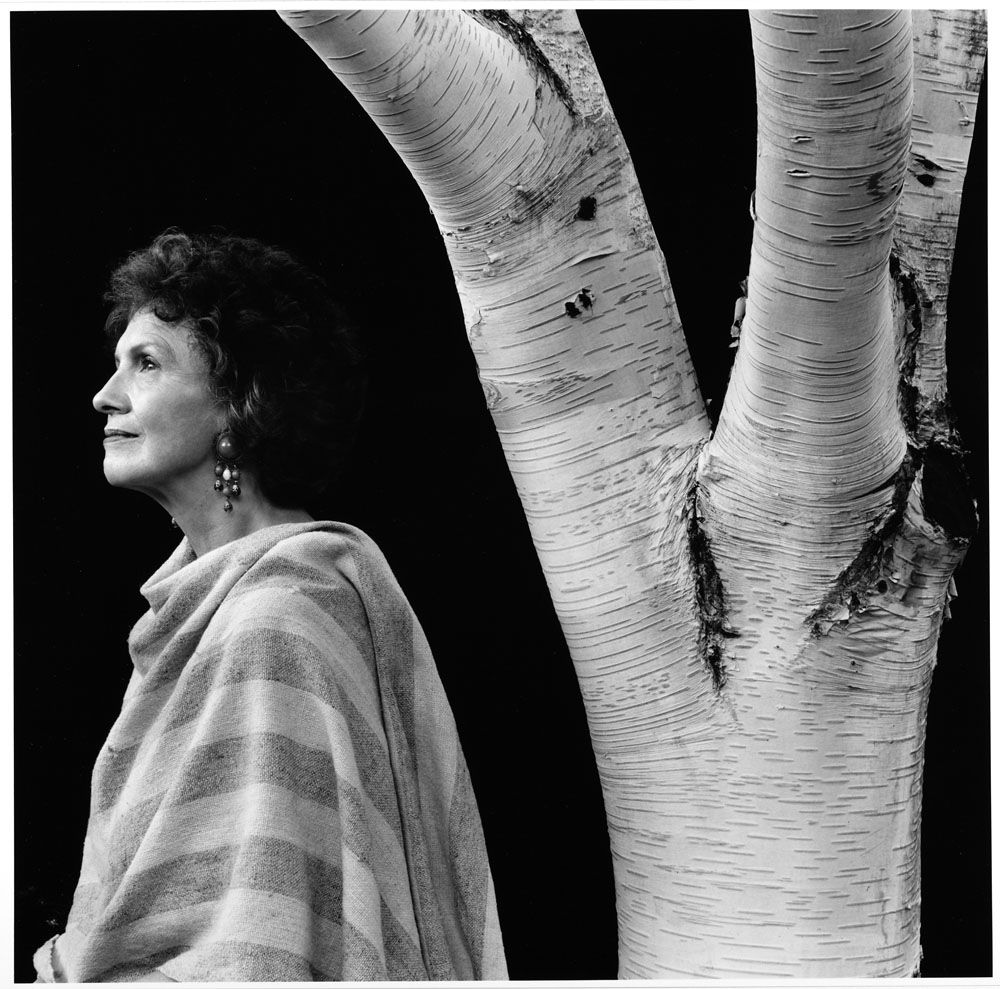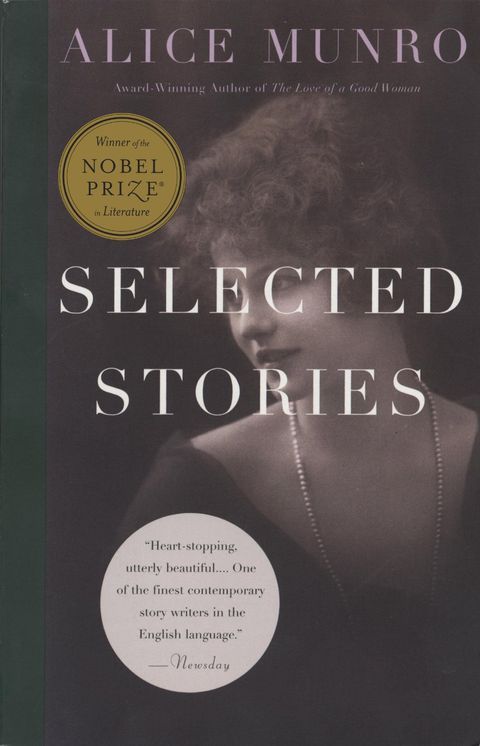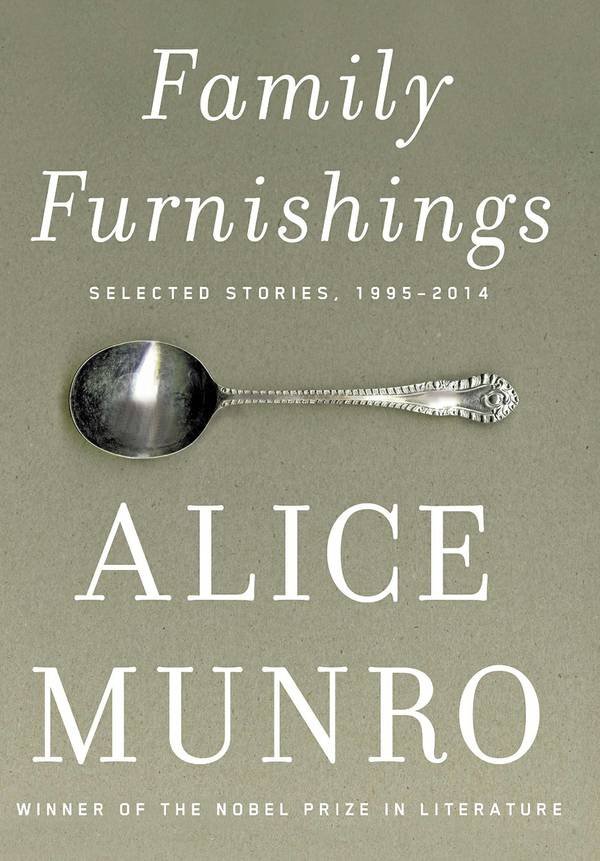The literary world lost one of its most important and influential writers on May 13 when Alice Munro, who wrote only short stories from the late 1960s until her final collection, Dear Life, in 2013, passed away at the age of 92. There is no praise that was not heaped on her work during her long, productive life, culminating in the Nobel Prize in Literature in 2013. Munro was equally beloved of both readers and writers, for whom she was a guiding light.
Munro’s life and work were celebrated by the Toronto Globe and Mail, New York Times, Washington Post, NPR, BBC, and of course, the CBC. You may also enjoy this 2017 piece from the CBC: “92 Things to Know About Master Short Story Writer Alice Munro.” You can find a complete list of her work here.
Knowing how much writers admired and were influenced by Munro’s stories, I asked a few dozen writer friends if they would like to contribute their thoughts on the place of Munro’s stories in their life. I heard back from 15 writers who, despite significant differences in the style and subject matter of their writing, share a deep love for Alice Munro’s stories.
Roxana Robinson (author of Leaving, Dawson’s Fall, Sparta, Cost, and Georgia O’Keeffe: A Life)
Here is a piece I wrote for The New Yorker when Alice Munro won the Nobel Prize in 2013. I think it sums up my feelings about her.
“Like Chekhov, Alice Munro never sets out to make a political point. She isn’t sexist, she has no axe to grind. She’s simply bearing witness to the human experience, reporting from the front lines. Yet she is making a political point, one that’s radical because it’s so enormous and so unsettling. The point is that girls and women, even those who lead narrow and constricted lives, those who wield no influence, who have a limited experience in the world, are just as significant and important as boys and men, those who take drugs, ride across the border, drift down the river, or hunt whales.
“Women’s lives, too, are driven by the great forces that drive all important experience. As it turns out, all those forces are internal: rage, love, jealousy, spite, grief. These are the things that make our lives so wild and dramatic, whether the backdrops are harpoons or swing sets. The great experiences can be set anywhere: a dentist’s office, a neighbor’s living room, a country road at night. It’s those propulsive, breathtaking, suffocating forces inside us that make those moments so vivid and shocking, it’s what’s inside us that cracks the landscape open, shocking, and illuminating like a streak of lightning. She showed us that, Alice Munro.
“What we all lead are ordinary lives with extraordinary passages. It’s Munro who reminds us of this, and that the extraordinary is experienced by women as often as by men, and it needn’t take place on a whaling ship. Piano teachers, divorced professors, country doctors, solitary widows in the country—all those small and insignificant people lead lives of enormous drama. Women lead lives of enormous drama. She has made that into fact.”
Elizabeth Graver (author of Kantika and The End of the Point)
I’ve long had this quote by Alice Munro taped up near my desk:
“A story is not like a road to follow … it’s more like a house. You go inside and stay there for a while, wandering back and forth and settling where you like and discovering how the room and corridors relate to each other, how the world outside is altered by being viewed from these windows. And you, the visitor, the reader, are altered as well by being in this enclosed space, whether it is ample and easy or full of crooked turns, or sparsely or opulently furnished. You can go back again and again, and the house, the story, always contains more than you saw the last time. It also has a sturdy sense of itself of being built out of its own necessity, not just to shelter or beguile you.”
Alice Munro’s stories have been a friend at me—at once steady and filled with the most astonishing leaps and surprises—since my earliest writing days. I remember thinking wait, you can do that as she broke with point of view, galloped decades forward in time through a mere space break and (almost relentlessly but also with great patience) tracked the complex landscapes of inner life. I love the mix in her work of an intense focus on minutiae—the soil, fur, feathers, hats, coats, shivers, and glances of daily life—and the broad movement of time across lives and generations, often filtered through a philosophical lens, as in this sentence from The Moons of Jupiter: “They were all in their early thirties. An age at which it is sometimes hard to admit that what you are living is your life.”
Favorite stories: “Runaway,” “The Bear Went Over the Mountain,” and “Family Furnishings.”
Lisa Gornick (author of Tinderbox, Louisa Meets Bear, The Peacock Feast, and Ana Turns)
I don’t know any women writers for whom Alice Munro has not been an enormous influence. Different as the worlds of her characters may be to our own, we see ourselves in their ill-advised love affairs, their relations with aging parents, their anguish over estranged children, their class wounds. For me, the most mysterious element of her work has always been how she handles time—so many of her stories reading like compressed novels, the characters moving prospectively or retrospectively over decades, if not generations. The most fruitful hours of my earliest writing years were spent outlining some of Munro’s stories, with the impossible aim of catching a glimpse of the gears that move them so grippingly through time.
For a delightful window into Alice Munro’s work, I recommend listening to Margaret Atwood’s reading of Munro’s story, “Corrie” (here), followed by her chat with Munro’s longtime New Yorker editor, Deborah Treisman. Having met Munro when they were both fledgling writers (Margaret slept on the floor of Alice’s Victoria apartment), Atwood views Munro’s work with an insight and clarity that comes from knowing the landscapes and social distinctions of Munro’s rural and small-town settings—an understanding that unlocks not only layers of this quietly shocking story but reveals both a playful and relentlessly questing side of what so many of us would call our Alice.
Paula Whyman (author of You May See a Stranger: Stories)
From Alice Munro I learned that a short story could do what I had previously thought only a novel could do: a story could take place over many years, and it could skip over time; it could appear to change direction drastically and unpredictably; it could redirect the reader’s sympathies away from a presumed protagonist. A story could contain a world, while still zeroing in on the obscure, the indispensable particularities.
My favorite books are probably The Love of a Good Woman and Runaway. But I also want to put in a word for The Beggar Maid: The Flo and Rose Stories, which I also rank up there. I almost never hear people talk about it. It gave me ideas for structuring my first book.
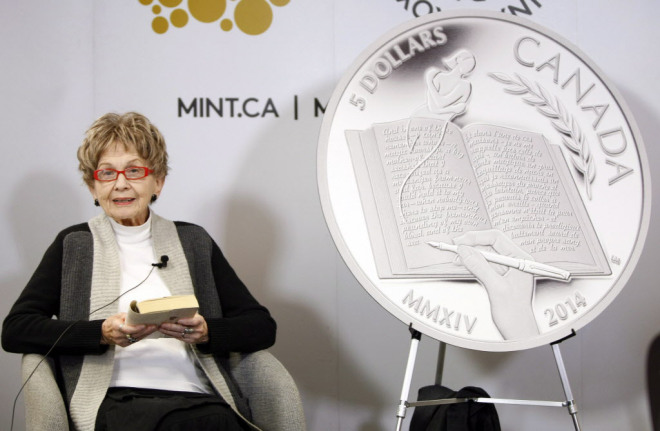
Christine Sneed (author of Little Known Facts, Paris He Said, The Virginity of Famous Men: Stories, Please Be Advised, and Direct Sunlight: Stories)
It might have been the 1990 edition of The Best American Short Stories, guest-edited by Richard Ford, who chose not one, but two stories by Alice Munro, “Differently” and “Wigtime,” that I came across her work for the first time. “Wigtime” in particular made a deep impression–so much so that I still think about this story so frequently it might now be a cerebral glitch. In “Wigtime,” Margot, a woman tipped off by an anonymous caller that her husband is having an affair, drives 90 miles in a rented van to the place where he’s decamped with the other woman. Margot dons a wig and heavy make-up to disguise herself and before long spies her husband with his mistress–who is not the woman Margot suspected him of carrying on with. It’s a very funny story, but as with most (all?) Munro stories, undercurrents of sadness and pathos are detectable in her characters’ tartly recounted misadventures. Thank the Muses we still have her books, if not the great Alice Munro herself on our earth anymore.
Barbara Linn Probst (author of Queen of the Owls, The Sound Between the Notes, and The Color of Ice)
As someone who’s read her stories for decades, I can only say this: Alice Munro’s work is everything I yearn to attain as a writer. The precise and unpretentious clarity with which she conveys the complexity, ambiguity, difficulty, and joy of being human. The masterful interweaving of time. The emotional depth, the truth—without an ounce of fat. She is one of those iconic figures who keeps beckoning me to become the best writer I can be.
It’s hard to pick just two or three favorite stories! But if I had to, I’d say that “Meneseteung” and “Friend of My Youth” have haunted me for decades.
And here is a shot of my Alice Munro bookshelf!
Debra Thomas (author of Luz and Josie and Vic)
No writing class taught me more about the craft of storytelling—especially character development—than I learned from reading Alice Munro.
While most of her stories take place in her beloved Huron County, they are always relatable, dealing with universal themes of dreams and disappointments, love and loss, all with a unique Munro twist—the murkiness and mystery of real love and the dilemma of making a choice when each bears some significant repercussion. She took us deep into her characters’ lives, often diving into their past (a master of backstory!) and connecting to their present, all within the limits of a short story.
Her enigmatic endings—in stories like “The Love of a Good Woman” and “The Bear Came Over the Mountain”—often sent me back to the beginning, reading and rereading to find clues as to what might happen after that last paragraph.
If forced to pick a favorite collection, I’m like a Munro character, having to face the consequences of a choice I might then second guess. This one? No, this one! So instead I’ll say, begin with Hateship, Friendship, Courtship, Loveship, Marriage, then move on to The Love of a Good Woman, and keep going.
While we’ve lost an icon, how fortunate we are that she left us such a legacy of work to read, study, and enjoy.
Elizabeth Benedict (author of Rewriting Illness: A View of My Own, Almost and The Practice of Deceit)
“This is a tough assignment as it’s impossible to distill the lessons of a great writer into a few words–even into many words. The mark of greatness is that you can keep looking, listening, or reading and never tire of what’s there. Every encounter has the potential to take your breath away. The comment that a character makes in the story “Dear Life” could apply to Munro’s work too. Regarding the “big novels” the character borrows from the library, she says about The Magic Mountain that it contains “a great argument between what on the one side seemed to be a genial and progressive notion of life and, on the other, a dark and somehow thrilling despair.” In everything she writes, I find lessons in pacing, structure, compassion, and humility.
Tess Callahan (author of April & Oliver and Dawnland)
I remember scenes from Alice Munro stories as vividly as if they were my own memories, not because they were extraordinary, but because of her ability to unveil the ordinary with vividness and exactitude. She brings intimacy and attention to everyday experience. At times her brilliance made me want to throw up my hands and give up trying to write, while simultaneously inspiring me to dig deeper for truth, clarity, and simplicity. I am deeply grateful for the gift of her words in the world.
Mary Camarillo (author of The Lockhart Women and Those People Behind Us)
Alice Munro said in an interview after receiving the Nobel Prize in Literature that “any life can be interesting.” When I first started trying to write fiction twelve years ago, I devoured her short stories. Although Munro wrote about life in rural Canada, far from my Southern California neighborhood, her characters seemed familiar. Her stories are quietly powerful and densely layered with an underlying sense of humor. She was a master at capturing a certain place and time and making it feel universal. Those are the kinds of stories I want to tell.
Elizabeth Poliner (author of As Close to Us as Breathing)
I first came to love Munro’s stories for the resonance I felt with her subject matter—the close examination of the lives of girls and women; the tension she returns to again and again between the modest, rural place of her youth and the seemingly sophisticated world of the city, and the tension of being educated beyond one’s place of origin; the intricacies of family love; the implicit feminism of her worldview. One of the joys for me of reading Munro is how her work often makes me stop, pause, and re-see my life, especially the place of my youth—a small, working-class Connecticut town where most of my classmates ended their educations at high school, and where our Jewish family was such an anomaly—with eyes enlarged by the sensitivity of Munro’s stories. I was some years into reading her work, and some years—though not too many—beyond my MFA program, when I began to diagram Munro’s stories, specifically those sprawling mid-career stories that often move all over in time yet nevertheless hang together perfectly and read with utter and enviable smoothness. In their structural oddity and wonder, they don’t seem constructed at all as much as breathed into life. I wondered, on a structural level, what was really going on. How did she do it?
When she won the Nobel Prize, I printed the announcement and hung it, like another kind of prize, on my office door. By then I was teaching in an MFA program, and I always included Munro’s stories in a literature course on the short story designed for our MFA students. As I saw it, Munro’s stories were the grand finale, what we were working our way up to all semester. And now she’d won the Nobel. My joy, like so many others, was over the top. It seemed to me as if not only she, but also we had won it, and by “we” I mean the many writers, like myself, who felt so blessed by her stories—their fullness, intricacy, and deeper truths—and who learned so much about the possibilities of fiction as we read and read.
When my novel As Close to Us as Breathing came out, I sent her a copy (my editor somehow knew her address). I was in Taos, New Mexico, on a writing retreat. Earlier that day, I’d gotten my hair done by a hairdresser who swore he was a genius with curly hair like mine. But he used a blow dryer on it, frizzing it to no end, and I walked out looking ridiculous with bigger-than-big hair. The book was in the car, and the next stop—big hair or not—was the post office to send her the book. It only occurred to me that week that I could do something like that, send her a copy. I didn’t expect a response and in fact she never got back to me (and I now know she was sick by then) but just sending it was the most triumphant and daring errand of my life. To this day the customs declaration from the Taos post office, almost wholly faded, remains tacked to my story board, a talisman of sorts, a good luck charm, something that unfailingly makes me smile, something, useless as it is, I won’t be taking down anytime soon.
I’ve written a bit about Munro, and in one essay I offer a close reading of a favorite story, the impossibly multi-layered and beautiful “Friend of My Youth.” https://lithub.com/endings-that-change-everything-on-alice-munros-literary-innovations/
Tara Lynn Masih (author of My Real Name is Hanna and How We Disappear: Novella & Stories)
This is what I would like to thank Alice Munro for: As a youth, I was immersed in fairy tales, mysteries, and novels. I recall telling someone I hated short stories. I have no idea what stories I was reading to have formed such a lousy, negative opinion, but I know the three writers who changed my mind: Flannery O’Connor, J.D. Salinger, and Alice Munro.
I read Munro’s Dance of the Happy Shades many decades ago, but I clearly recall the feeling I had while reading it, curled up on a bench on our back patio, during some slow summer days. I felt as if I were reading stories capturing all the women I knew, young and old. And I’d found a writer who cared about and carefully rendered in short prose the small landscapes and details that make up a life, which eventually helped me find my own writer’s voice.
She showed me the enormity of what could be contained in a small space.
I read many more of her collections and novels, but that first experience of reading Happy Shades, and the many small epiphanies she gifted me, still lingers, even more than forty years later.
Colette Sartor (author of Once Removed: Stories)
Alice Munro made me want to be a writer, and her stories helped me understand that short stories could be as evocative and immersive as novels. It’s her work I turn to when I feel lost or out of touch with my own. Her richly realized characters are so driven by desire that I’m deeply invested in their every move and devastated when bad things happen to them. That’s another key to her storytelling: things happen. Even while Alice Munro allows us access to her characters’ interior lives, she also allows them to act and react in a causal way. Each choice they make has an impact on the story’s forward trajectory, which means that whenever I reread one of her stories — which I do often — I’m breathless with anticipation for what will unfurl. I’ve felt lonely these past years without a new collection by Munro to devour. Yet she’s left such a legacy of worlds for me to revisit that I am forever grateful to her for inspiring me to power forward with my own work even when I can’t imagine having anything else to say.
My favorite Alice Munro stories: “The Bear Came Over the Mountain,” “Free Radicals,” “Wenlock Edge,” “Open Secrets”
Rachel Hall (author of Heirlooms: Stories)
Of all the many things I love about Alice Munro’s stories, perhaps the one I love the most is the way her stories give permission. What do I mean by that? Two things: First, Munro doesn’t judge her characters for the messes they invite. Characters—mostly women—fall in love with the wrong man at the wrong time, leave their children, make all manner of bad choices, but they are not judged for it, at least not by Munro, and this lack of judgement allows for a more interesting way of approaching stories and characters, and dare I say it? —life itself. What if we offered our characters and our loved ones, ourselves, this empathy and understanding instead of judging and correcting and criticizing? It’s harder, perhaps, but much more interesting to try to understand why someone behaves as they do, to attempt to understand our motives.
The other, more writerly takeaway is that Munro gives us permission to break the rules of fiction. She routinely veers out of POV, or she flips about in time like a nimble gymnast; she might end a story with a wholly unexpected image as she does in “Labor Day Dinner.” Often in her stories, one feels the writer step out from behind the curtain of character or narrator, Oz-like, to admit that this is a story made up by a person who is simply trying to understand things. This could, in another writer’s hands, feel disappointing, but with Munro, it is magic: awesome and intimate.
Here are a couple examples: “And they may get it wrong, after all. I may have got it wrong.” (From “Meneseteung”) “If I had been making a proper story out of this, I would have ended it, I think, with my mother not answering and going ahead of me across the pasture.” (From “Ottawa Valley”)
These moments of empathy and understanding of human behavior send me back to Munro’s stories time and time again. They offer permission, possibility, succor.
Favorite stories: “Differently,” “Carried Away,” “Free Radicals,” “The Children Stay”
David Abrams (author of Fobbit and Brave Deeds)
“So this was grief. She felt as if a sack of cement had been poured into her and quickly hardened. She could barely move.” — “Silence” by Alice Munro
We knew her time with us was drawing to a close—when you reach 90, the slow acceptance of the inevitable seeps in, floods us with finality—but still there’s an ache in us when the End actually comes. This week, the End came for one of our greatest (if not THE greatest) contemporary writers: Alice Munro, Nobel Prize winner and a genius on the page, died at 92. We feel the loss deeply: there will be no more new words, no more sentences strung like outdoor light bulbs, weaving together the paragraphs.
We most likely have all the Munro stories we’re going to get (unless there is an unpublished trove in a vault somewhere), and that has to be enough. Going back through the stories reminds me of what we lost this week: a strong, dependable voice that never wavered.
